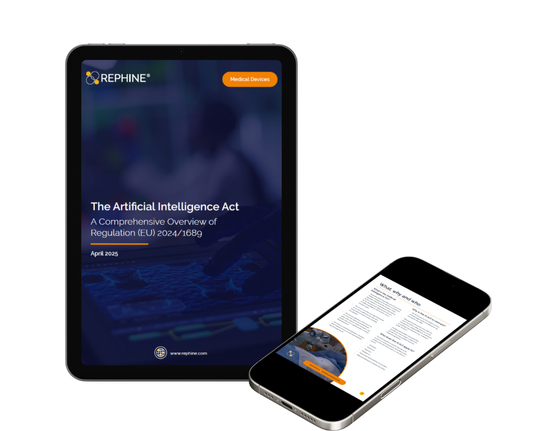The AI Act sets a global precedent for responsible AI development—balancing innovation with accountability and ensuring AI technologies uphold safety, transparency, and fundamental rights
About this Whitepaper
The Artificial Intelligence Act (Regulation (EU) 2024/1689) is the European Union’s first-ever legislation to comprehensively regulate AI systems. It establishes a risk-based framework to ensure AI technologies are developed and deployed responsibly, balancing innovation with accountability.
This whitepaper provides an essential overview of the AI Act, helping businesses, developers, and public authorities understand the law’s key requirements, who it applies to, and how to prepare for compliance.
Discover the classification of AI systems, specific obligations for high-risk and general-purpose AI models, enforcement mechanisms, penalties, and the upcoming implementation timelines.
Stay ahead of the curve and equip yourself with the knowledge needed to navigate AI regulation confidently.
Key Topics Covered
- What the Artificial Intelligence Act is and why it is needed
- Who must comply: providers, deployers, importers, distributors, authorised representatives
- Key definitions: AI systems, systemic risk, general-purpose AI models
- Risk-based classification of AI systems: Unacceptable, High, Limited, and Minimal risk
- Detailed obligations for high-risk AI systems, including quality management, transparency, human oversight, and cybersecurity
- Additional requirements for General-Purpose AI Models with systemic risk
- Penalties for non-compliance, including fines up to €35 million
- Practical steps businesses and developers should take now to prepare
- Important deadlines and the AI Act’s implementation timeline
Learn about AI system risk classifications, compliance obligations, penalties, and timelines and stay ahead of EU AI regulations.
Download your AI Act Compliance Whitepaper

Who this is for
This whitepaper is designed for:
AI system developers and providers launching solutions within the EU
Organisations deploying AI technologies in operations or services
Medical device manufacturers integrating AI into their products
Compliance, legal, and regulatory professionals overseeing AI governance
Public sector bodies and private organisations using AI in decision-making
Anyone seeking to understand and implement the AI Act’s requirements









